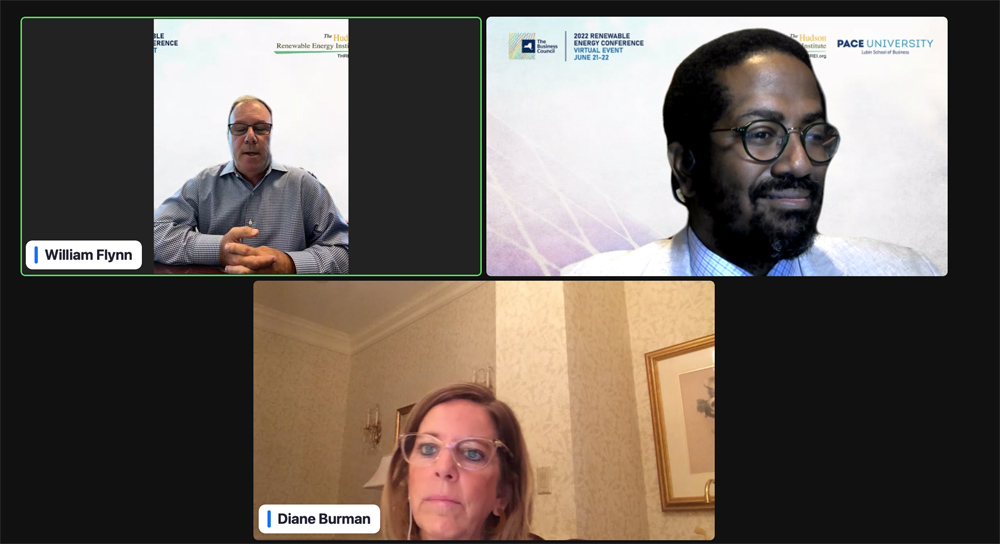New Jersey has added $6 million to two incentive programs designed to encourage the development of electric vehicle charging stations at tourist locations and multifamily buildings, as the state prepares to launch the third phase of a program that has to date awarded incentives for the purchase of more than 12,000 EVs.
The New Jersey Board of Public Utilities (BPU) allocated $4.5 million to the tourist program last month. Launched in the fall, the program closed its second round of applications on Wednesday. The project in the first phase awarded more than $1 million in grants for the installation of chargers at 24 tourist sites, resulting in the installation of 61 chargers, including to four state parks and at least eight sites on the Jersey Shore.
The program awards an incentive of up to $2,000 for Level 2 chargers and 50% of the make-ready costs, up to $5,000, and up to 50% of the cost of a DC fast charger and up to $75,000 in make-ready costs. (See NJ Seeks to Lure Tourists with EV Chargers.)
The board also allocated $1.5 million to strengthen the program that awards incentive packages to stimulate the development of chargers at multifamily dwellings. The program, now in its second phase, awarded about $1 million for the purchase of 223 chargers and funded the preparation of sites at 67 multiunit dwellings in 41 municipalities, the BPU said. (See NJ Greenlights Incentives for Multi-dwelling EV Chargers.)
Cathleen Lewis, e-mobility program manager for the BPU, said the increased popularity of EVs and the future need for home chargers is already leading to multiunit dwelling developers planning for charging at their properties.
“What you’re seeing is developers know that this is coming; this is going to be an amenity that people are going to want,” Lewis said. She said there had been a “huge diversity” in applications, stretching from suburbs to overburdened communities and dwellings of different sizes.
The funding shifts come as the BPU also prepares to launch the third phase of its Charge Up New Jersey program, which provides incentives for the purchase of an EV. The agency at the end of last month released a straw proposal for the next phase of incentives, with a cut from $5,000 to $4,000 of the maximum incentive available, and an incentive of $250 for the purchase of a Level 2 smart charger for residential use.
The BPU says the program has so far incentivized the purchase of 12,225 vehicles with another 1,235 pending, for a total cost of $57.7 million. The agency expects the third phase, which will require board approval once the final draft is prepared, to start some time after the beginning of the state’s new fiscal year in July.
The state will also receive $15.5 million in federal funds under the National Electric Vehicle Infrastructure Formula program to buy and install chargers, funding that the Biden administration earlier this month said must be used to create a national network that has minimum reliability standards and charging speed, works for all cars and takes common payment methods. (See Biden Administration to Order EV Charging Standards.)
State plans are due in August. Proposed rules released by the Federal Highway Administration (FHWA) include requirements that EV infrastructure “operate on the same software platforms from one state to another”; that they be installed, operated and maintained with qualified technicians; and that basic information, such as location, connector type, power level, real-time status and real-time price, be available free of charge and easily publicized.
Growth in EVs, Charger Installations
The state’s portfolio of EV incentive and charger programs provide a window into the demand patterns in New Jersey as the state pursues aggressive EV and electric charging goals. The state’s Energy Master Plan calls for the state to deploy 330,000 light-duty EVs on the road by 2025 on the way to reaching 100% clean energy by 2050, and cutting emissions by 80% of 2006 levels by the same date.
The state in January 2020 enacted a law that called for the installation of at least 400 DC fast chargers, which can add about 60 to 80 miles to an EV in 20 minutes of charging, and 1,000 Level 2 chargers, which add 10 to 20 miles per hour of charging time, by Dec. 31, 2025.
The law also called for fast chargers with 150 kW of charging power to be located on travel corridors and spaced less than 25 miles apart. The law said by the same date, 15% of multiunit dwellings much have chargers of some sort and 20% of franchised overnight-lodging establishment must have chargers.
The law also required at least 25% of state-owned emergency light-duty vehicles to be plug-ins by Dec. 31, 2025, and 100% of state-owned nonemergency light-duty vehicles to be plug-ins by 2035.
The state had 64,300 registered plug-ins at the end of last year, compared to about 42,000 a year earlier, about one-fifth of the 2025 target.
The state has more than 300 public charging locations, and about 95% of the state is located within a 25-mile radius of a fast charger, according to the Drive Green website operated by the New Jersey Department of Environmental Protection (DEP). In total, there are about 750 chargers in the state, compared to about 675 a year ago, according to the recent state budget.
Local and state government has been slow to transition, however. The additional funding for the tourism and multiunit programs came from the $7 million set aside for the state’s Clean Fleet program, which was launched in 2019 and designed to encourage local and state government entities to convert their fleets to EVs.
“Due to logistical and budgetary reasons, the Clean Fleet program has not generated sufficient interest to utilize all the existing, remaining funding,” according to the BPU order detailing the shift in funds.
Some communities have nevertheless embraced them, with the help of other programs. The DEP on June 15 said the city of Paterson, in North Jersey, would soon receive a prototype electric ambulance, purchased with $908,686 in state funds that will also pay for two fast-charging stations. The city had earlier announced the purchase of 38 Nissan Leafs purchased with the help of $210,000 in state funds for use by fire, housing and health inspectors and the city’s Department of Public Works.
The ambulances, which are expected to go into service in about a year, will replace diesel vehicles, the DEP said in a release. Replacing ambulances has a strong impact in cutting emissions because they spend a large proportion of their time idling as they wait for a call, the department said.
Middle-income Purchasers
The BPU also believes it has had some success in bringing EVs, which are often seen as the domain of mainly wealthy buyers, to those in more modest income brackets.
The second phase of the Charge Up New Jersey Program provided incentives for the purchase of 3,791 EVs, of which 47% got the maximum incentive, according to figures released by the BPU at a June 13 public meeting on the program straw proposal. The figures showed the impact of the board’s decision to limit the maximum incentive of $5,000 to vehicles costing no more than $45,000, with an incentive of only $2,000 for higher-priced vehicles, to a maximum of $55,000.
The rule change was introduced for the second phase of the program, in June, after Tesla vehicles accounted for 83% of the incentives in the first phase, and 93% of the incentives were for the maximum grant. The BPU introduced the $45,000 vehicle cost cap — which meant that only the cheapest Tesla was eligible for the maximum incentive — in an effort to award the subsidies to “incentive essential” customers: those who would only buy an EV if there was an incentive available.
BPU officials also said that they were trying to incentivize the purchase of EVs among middle-income families, rather than just those with higher incomes.
Data for approved incentives and pending applications from the second phase show the impact of the shift, with Teslas accounting for only 66% of the incentives approved or with applications pending in the second round.
“So, we’ve seen a more diversified field in year 2 than we did in year 1,” said the BPU’s Lewis. “We’ve seen many more of the more affordable vehicles and those under $45,000 receiving incentives.
She noted that the BPU has seen “a significant increase” — to 40% of the total — in applicants who got incentives of $2,000 or less. That allows the BPU to “provide incentives for more vehicles with that same budget,” she said.
The next-placed make of vehicle was Ford, mainly the Mustang Mach-E, which accounted for 7% of awards. Hyundai also accounted for 7%, with awards for Kona Electric, Hyundai Ioniq Electric and Ioniq PHEV vehicles. Chevrolet Bolts accounted for 6%.

